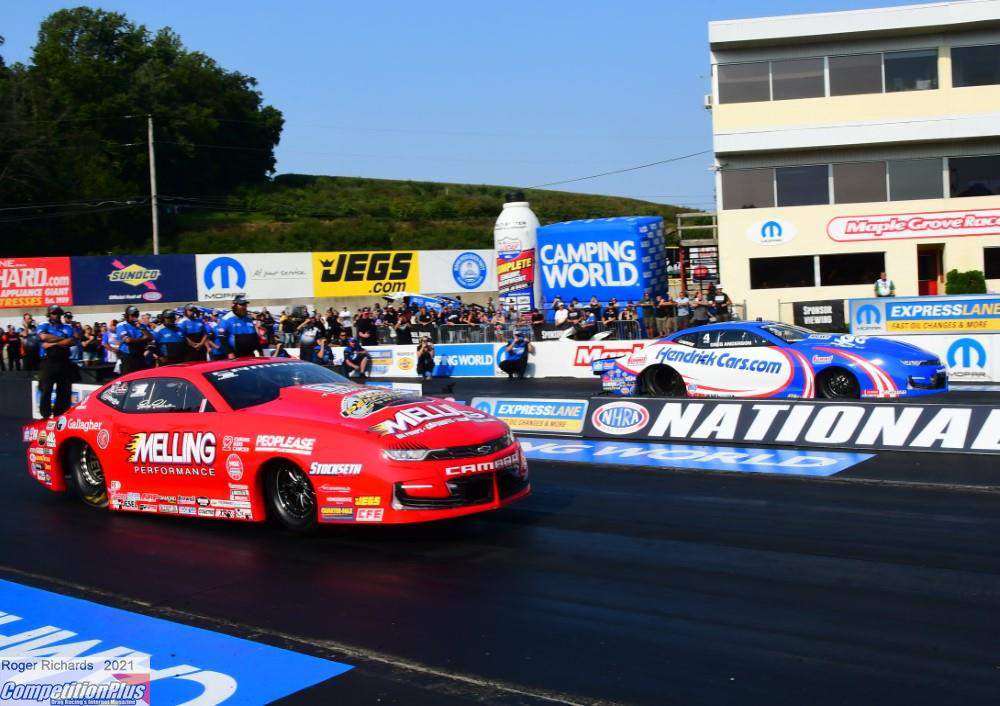NHRA PRO STOCK: HOW WE GOT TO WHERE WE ARE
ORIGINALLY PUBLISHED 11-21
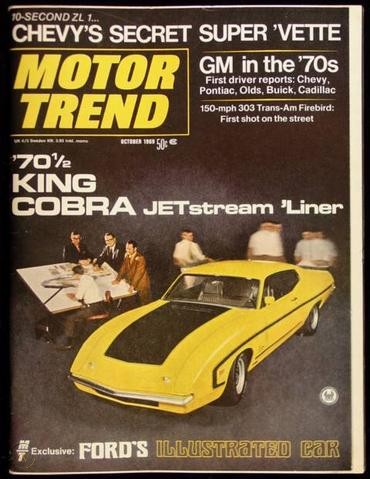
Just ask a casual drag racing fan what they think of today's current NHRA Pro Stock, and chances are you will get one of these answers.
"Nothing stock, nothing relatable, never watch them. Best time to go check out the sportsman pits."
"Park a Pro Stock car next to the factory-produced equivalent, and that'll answer the question as far as I'm concerned."
"More like Pro Camaro. Need to swap it out with Pro Mod on the national tour."
CompetitionPlus.com posed this very question on its Facebook page.
Follower Jim Parks had probably what was the most interesting response.
"Very competitive and probably the closest racing in the history of the sport," Parks wrote. "Can be boring seeing the same style car over and over again but still worthy of a professional category."
So how did the class once referred to as the "Factory Hot Rods" get to this point?
One word - evolution.
From the days when this style of racing first developed in the UDRA (United Drag Racers Association) and shortly after that in the American Hot Rod Association's heads-up Super Stock classes, the naturally aspirated top of the food chain began a pathway towards today's modern entry.
One of the little-known facts in today's drag racing world is that Wally Parks, NHRA's founder, and first President, didn't want a heads-up Pro Stock category.

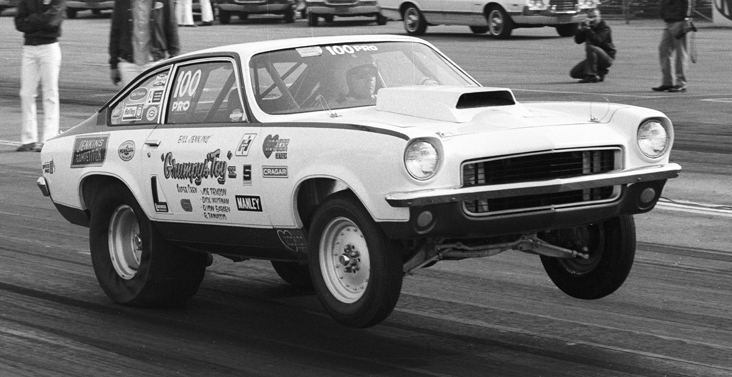
While UDRA and AHRA's Pro Stock classes were already flourishing, NHRA held firm to their "alphabet" soup of Super Stock. In the boldest of statements, during an exclusive October 1969 interview with Motor Trend, Parks said, "Under no circumstances will we ever run a heads up Pro Stock class, or a heads up Super Stock class."
Even more interesting, Parks didn't even refer to the category as Super Stock, much less Pro Stock. He coined the term gas Funny Cars.
As Parks put it, "This heads up gas funny car class is becoming popular is so out of touch with what is actually produced. There's no way in the world we're ever going to do anything like that. We have a great product. We're going to concentrate on that."
In those days, printed magazines generally had a ten-week lead time, meaning that just weeks after Parks did the interview, the landscape of his adamant stance on heads-up Super Stock racing required a dramatic change.
The manufacturers gravitated towards Super Stock, even as a handicap category, because the new media darlings, the fuel Funny Cars, didn't move the needle for new car sales as the Super Stocks did. Additionally, the handicapped Super Stocker essentially gave all the manufacturers a chance to win. In those days, if the manufacturer wanted you to build a Super Stocker, you did.
While the manufacturers used their support as leverage over the drivers, the drivers used the factory support over the sanctioning bodies.
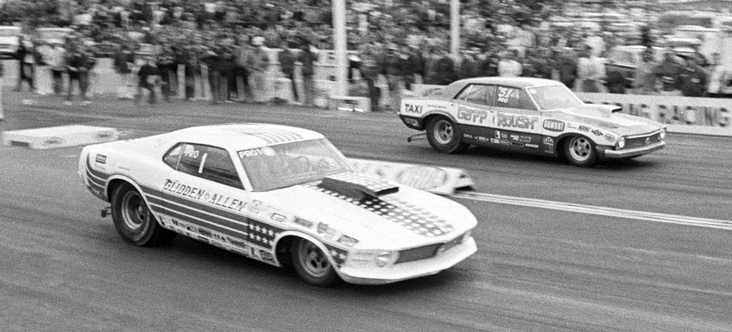
Before the 1970 season, the AHRA announced the ten-race Grand American Series, the first championship-paying, points series in drag racing. The AHRA's Jim Tice reportedly approached the NHRA's leading Super Stock racers, many of whom were already racing the loosely-regulated AHRA Pro Stock class, with a proposal of big appearance money for exclusivity.
Now, the leading factory drivers Ronnie Sox, "Dyno" Don Nicholson, Butch Leal, and Bill Jenkins, all of whom were reportedly the object of Tice's desire to dominate the market, had serious leverage over NHRA in forcing them to create not only a Pro Stock division, but one with stricter rules.
At the time, the AHRA's "Pro Stocks" were already deep into the nine-second zone.
"On the Friday of the U.S. Nationals in 1969, they had a meeting with Wally at Indy, and they essentially said, 'Here's the deal, Tice has offered us serious money to run nothing but his Grand American Series unless you want us to bail out of the NHRA, you had better create a Pro Stock class," noted drag racing historian Bret Kepner confirmed.
Money wasn't the issue as much as having a heads-up class was. The race money supplemented a robust match race schedule.

In the October 31, 1969 issue of NHRA's National DRAGSTER, NHRA announced their new Pro Stock class for 1970 as part of the sanctioning body's "Super Season" of drag racing.
At the onset, Pro Stock brought forth a loose interpretation of the term "factory hot rod."
The universal 7 pounds per cubic inch rule on production cars 1968 or later challenged the concept of factory-relatable when Hemi-powered Dusters, Rat-powered Novas, and Cammer Mavericks made their way into the class.
For two years, the domination of the Chrysler cars was apparent with a 12-3 final round record. Yes, only three non Mopar cars took home titles in the first two seasons.
A huge step towards moving out of the spirit of a factory hot rod movement came in 1972, not when Bill Jenkins debuted a tube-chassis race car at the NHRA Winternationals.
The real slap was that Jenkins put a V-8 in a subcompact Vega. The rules had been altered to allow this combination to run legally.
"The new rules that were designed to allow the subcompact cars, because that's what world was changing to," Kepner said. "The new rules which allowed the subcompact cars to compete, creating cars that were never available from the factory, never were going to be available from the factory, and in fact, weren't even remotely Super Stockers. They were gassers and altereds."
Jenkins wasn't the first to have a Vega; that honor belonged to Howard Neal. He was just the most famous drag racer to have one.
Outside of Pro Stock, Jenkins Vega was at best a Gasser and closely resembled an altered. Neither classification fit the mantra of Pro Stock.
Then came the Pinto.
While the subcompacts were flooding Pro Stock, only one combination genuinely fit the bill - an AMC Gremlin. They came with a V-8 option.
Then, at the end of the 1972 season, the Lenco began making its way into Pro Stock. There's a big misconception that Pro Stock has always been a manual transmission class, but a few competitive automatic transmission-equipped cars were in the mix. Case in point, Barney Oldfield drive the Motown Missile Challenger to the No. 1 qualifying position at the 1970 NHRA Summernationals in York, Pa.
The Lenco essentially made bad drivers better drivers.
"A lot of people say the Lenco's the worst thing that ever happened to Ronnie Sox," added Kepner.

The big drawback for the Lenco was the price. At one time, the cost of a Lenco was equal, if not more, than a competitive race engine.
Just to put this in perspective, the cost of a Pro Stock car was about $10,000, and to add a Lenco into the mix drove the price tag up by $4,000.
"A lot of people just quit," Kepner added.
So, by 1973, the so-called factory hot rods were now sporting combinations that one couldn't purchase at the dealership, with a complete tube chassis and a planetary transmission.
The next aspect of the metamorphosis became the most objectionable to many of the original Pro Stock/Super Stocks. The NHRA's tech department, in an attempt to instill parity, which was out of whack from the get-go, tried to reel in the advantage of the subcompacts.
NHRA viewed their weight breaks for all combinations to be the heal-all salve to put the small block Vegas on a level playing field with the Hemi Dusters.
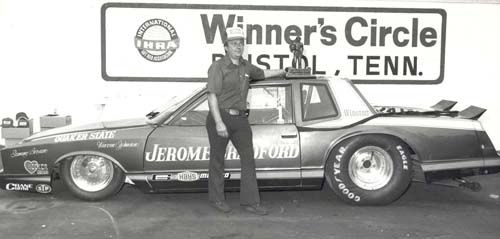
Essentially in 1972, there weren't any American-made subcompacts or cars under 100-inches in wheelbase available to Mopar drivers.
Jenkins' 330-inch small block and Ronnie Sox's 426-inch Hemi made the same horsepower per cubic inch. Yet, Jenkins could get his car down to 2,200 pounds legally while a Mopar was tipping the scales at 3,100.
NHRA's tech department had essentially opened a Pandora's Box by allowing the subcompacts in competition, forcing many Mopars over to AHRA and the newly formed IHRA.
The NHRA had weight breaks for everything from engine combinations to the wheelbase. As a matter of fact, a weight break afforded the Ford drivers based on wheelbase made racing more advantageous in 1974 behind the wheel of a 1970 Mustang and in 1975 a four-door Maverick. The process got even odder when the sanctioning body extended its three-year body rule to five.
By the time the 1980s had rolled around, the NHRA's cumbersome pounds-per-cubic-inch format had become both a headache and embarrassment.
Regardless of which combination the NHRA factored, they couldn't stop Bob Glidden. When it was declared it was just Glidden finding the loopholes for Ford, he moved over to a Plymouth Arrow and dominated with equal enthusiasm.
While the NHRA's "small block" format was mired in the 8.5-second range, the IHRA's less stringent mountain motor style of Pro Stock began to steal the NHRA's thunder with their version knocking on the door of the seven-second zone. In the Spring of 1980, low-budget Pro Stock driver Rickie Smith threw gasoline on the fire as he recorded the first-ever legal Pro Stock run in the sevens.
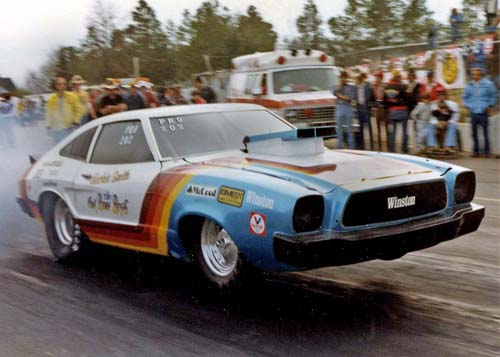
A media feeding frenzy ensued with drivers such as Warren Johnson, Pat Musi, Don Nicholson, and Ronnie Sox began putting up numbers that made headlines.
NHRA finally relented at the end of 1981 and announced it would simplify its Pro Stock with a somewhat version of the mountain motor program, except the displacement would be capped at 500-inches.
Pro Stock faced another issue on the horizon. By the mid-1980s, Detroit was starting to produce significantly fewer rear-wheel-drive cars, and carburetors were a thing of the past.
On record, the first rear-wheel-drive conversion was the Chevrolet Citation X-11 of Doug Messner, who ran his car in AHRA competition. The transition was pretty seamless as the Firenzas and Cavaliers quickly made their way into the class. The one which faced the most challenges was the Chevrolet Beretta which failed tech in the first two races Joe Lepone entered.
Because NHRA allowed nose extensions on the cars so chassis builders could fit the large displacement engines in the engine bay, the cars began to look less and less like the factory cars they were supposed to emulate.
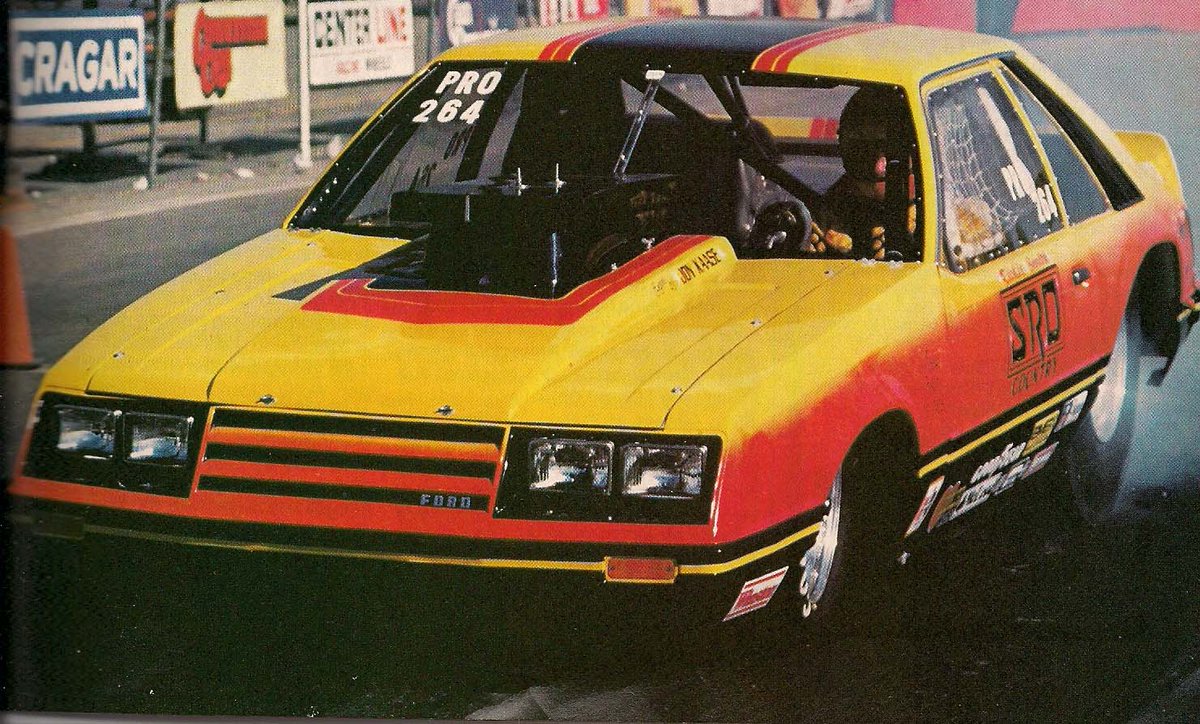
By the mid-to-late 1990s, finding a car with a steel or aluminum roof and quarters was challenging. This reality led to one of the most significant changes from the steel rear clip Pro Stock was based on.
The problem quickly became one where different chassis builders had different interpretations of the rules, meaning multiple dimensions for the same car design.
After surviving the nitrous oxide scandals of the 1990s, Pro Stock was out of control regarding its original purpose.
In 2000, NHRA got away from the templates like it had already done with Funny Car and moved to the "box standard." Thus the one-piece body became a part of the NHRA's Pro Stock DNA. It also left Pro Stock racers at the mercy of running only what the manufacturer approved.
So what is the box standard?
It's common knowledge that not all body designs were created equal. Yet brand loyal racers and factory-backed teams were forced to play the hand dealt them, even at the risk of losing. The inherent dynamics in nose overhang, the front end overhang, in widths or lack of width or height, or laid back windshields, as opposed to other brands or other body styles, were just a few of those issues. The body style which served the purpose better would often become dominant.
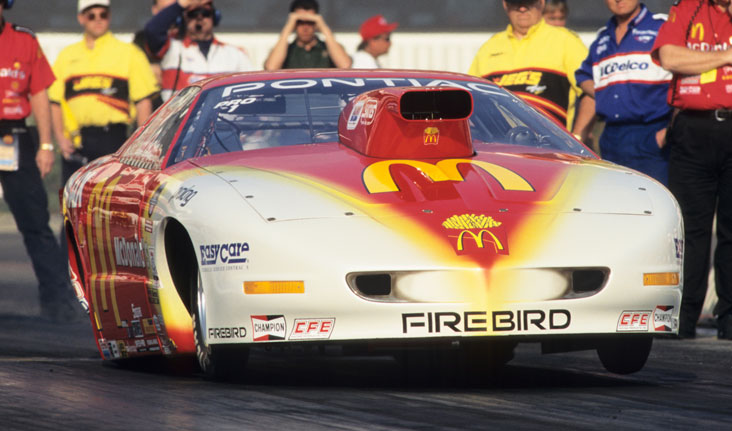
The "box standard" replaced the age-old process of the template, which could be exploited in certain areas. Basically, a builder could do anything they wanted to any body, as long as it fits in a box of established dimensions. In other words, one could lay back the windshield. They could narrow the car up. The wheelbase could be stretched. All cars had to have the same overhang. As Pro Stock goes, the cars stage with the front tires and trip the finish line beams with the front end.
Equality was the key. Case in point, it was common practice in the 1970s for Pro Stock fields to be separated by four-tenths of a second from No. 1 to the bump spot. By the 1980s, the number was down to an average of .25. The 1990s narrowed the number to a tenth.
Second-generation chassis builder RickieJones believes the move had its pros and cons.
"I think it's hard to say if it helped or hurt," Jones said. "I think there's certain aspects that have made more equal, but I'd say, if anything, the con might be that all the body styles start to look the same and you lose that identity that you get with steel body cars."
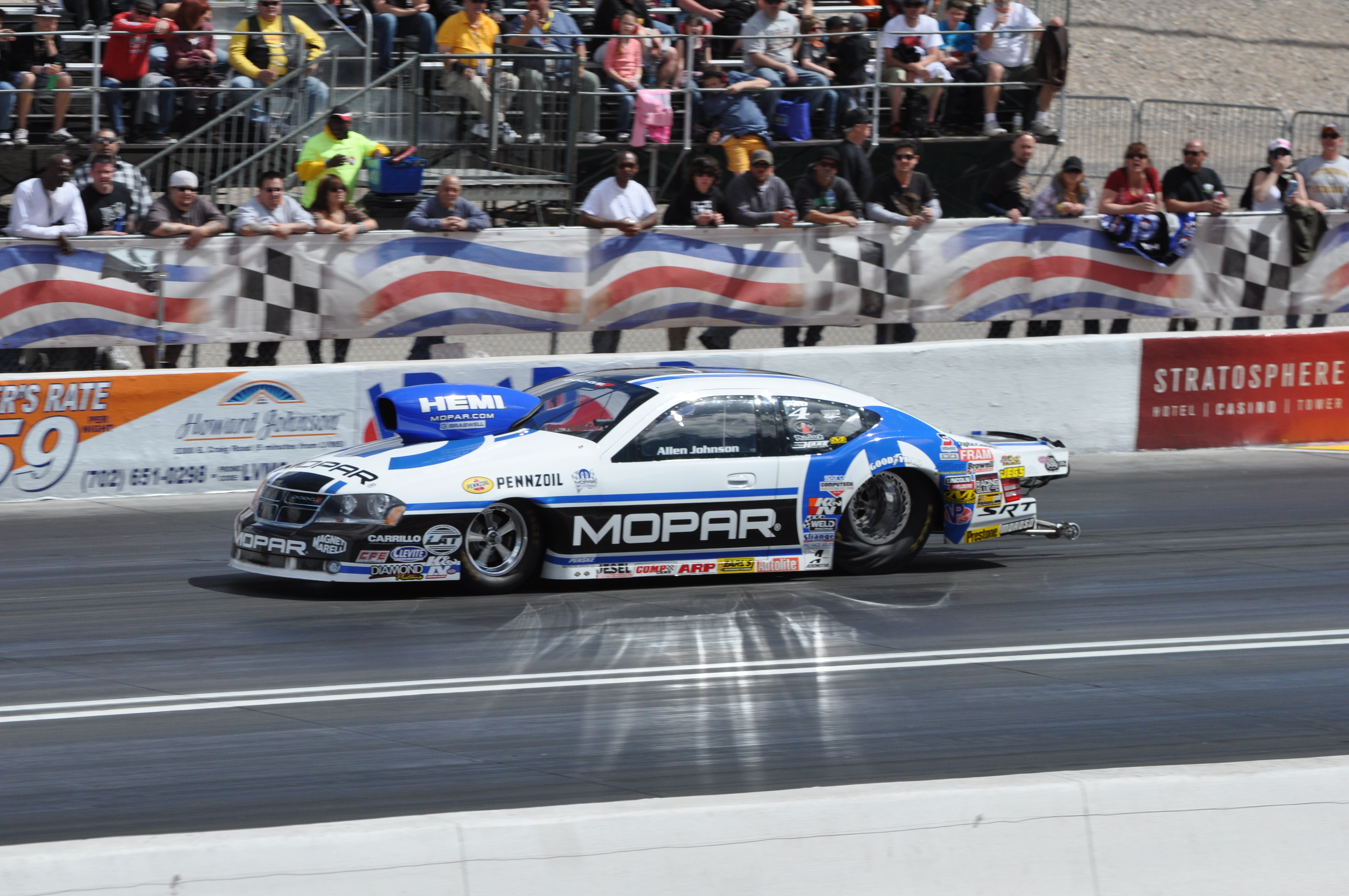


Still, up until 2015, one facet of the Pro Stock cars remained intact - they had to have actual headlights and taillights. That eventually fell by the wayside.
If there was a significant aspect of the one-piece bodies, construction became much more simplified. At least that's how chassis builder Jerry Bickel saw it.
"When we would do the steel roof and quarters, just to make them work I'd to modify them, I'd have to lower the quarter panels, cut them and reshape them, reshape the back bumper, change the overhang in the front, all that stuff took labor," Bickel explained. "And the problem was then my car would look one way, Bruce Allen's would look another way, Rickie Smith's would look another way, so on and so forth."
NHRA's Pro Stock had more significant issues than body recognizability. Costs were out of control, and participation was falling off. NHRA made sweeping changes to the class to revitalize the category, including the mandate of electronic fuel injection and an rpm limitation. In an attempt to create fan appeal, teams that had been previously secretive with their technology were forced to put their cars in the pits with the engines facing forward so the fans could interact more.
For the most part, at this time, the only consistent manufacturer supporting Pro Stock was Dodge/Chrysler, and in 2016, they pulled the plug on their program with Allen Johnson.
The rpm limit of 10,500 had put the Chrysler cars at a significant disadvantage.
Except for a few lone wolf Ford racers, and with the subsequent departure of Johnson in 2017, the show transformed into essentially a primarily Chevrolet Camaro show. For instance, in 2016, there were five Dodges in the NHRA Finals field. A year later, there were three. In 2018, there were two. Fords were non-existent.
Having a Chevrolet-dominated entry list is nothing new for NHRA; even as far back as the 1980 NHRA U.S. Nationals, 23 of the 36 cars entered in Pro Stock were Bowties. Five of those were Vegas and Monzas at the edge of the five-year body rule.
In an attempt to combat the Pro Camaro eliminator appearance, in 2018, NHRA withdrew one of the original regulations stating the engine must be the same manufacturer as the body.
Chassis builder Rick Jones feels those who clamor for the "good old days" ought to look back at the combinations the legends ran back in the day. In other words, Jones believes they would be right in the thick of the combination that is prevalent.
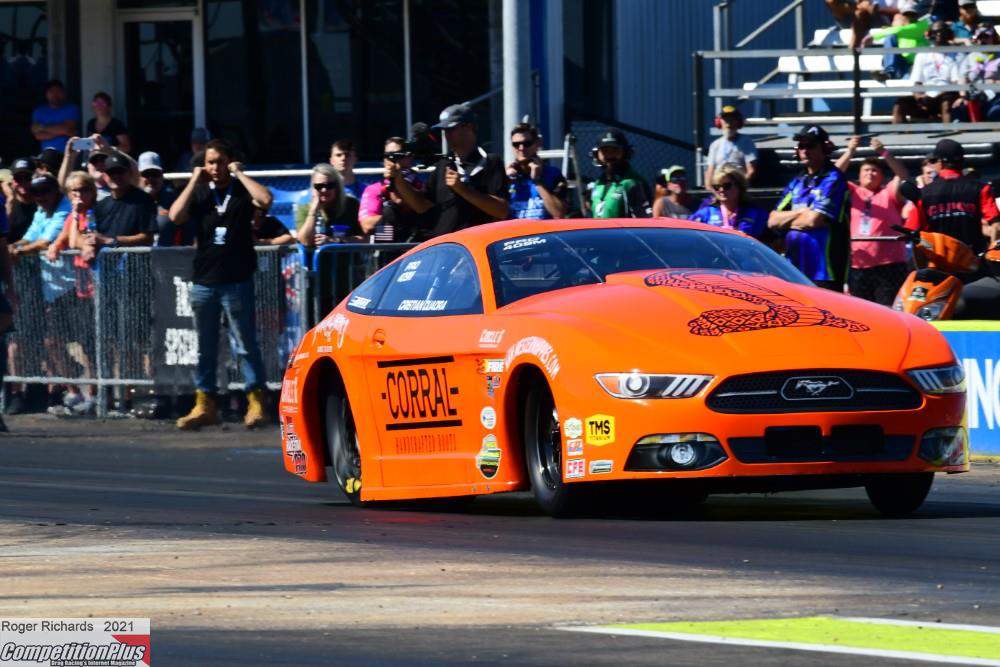
"Don't think for a moment if Glidden or Grumpy were alive, they wouldn't be in the middle of that technology," Jones said. "All of that evolution started with them, and they pushed it all to the limits. Maybe they would have thought of more ways to push them. For those who hate on today's Pro Stock, remember that. The legends were those who pushed the limits to make Pro Stock what it is today."
What resulted from all of the changes is the competition became closer than ever. The drivers became, in many instances, like robots. Regular close competition can have one major drawback, predictability.
The NHRA has considered many options to remove the predictability.
This season has provided a good measure of unpredictability in the winner's circle with the advent of the reasonably priced engine/car rental programs from Elite Performance and KB Racing. However, the cars remain predictable from launch to parachute.
With the NHRA's revelation of a Factory Experimental division, much speculation suggests this could be the future of Pro Stock. Team owner Richard Freeman says, "Bring it on." He believes it's the same thing that fueled Pro Stock to its status today, which will set the standard.
"I can tell you the people who think they are going to come over here and compete probably will not," Freeman said. "That's not being mean. Pro Stock is a full-time job. You have to have people, and you have to have resources. It doesn't matter what the engine combination is. The people who are doing it now will prosper."
And that concerted effort is how Pro Stock got to where it is today.





